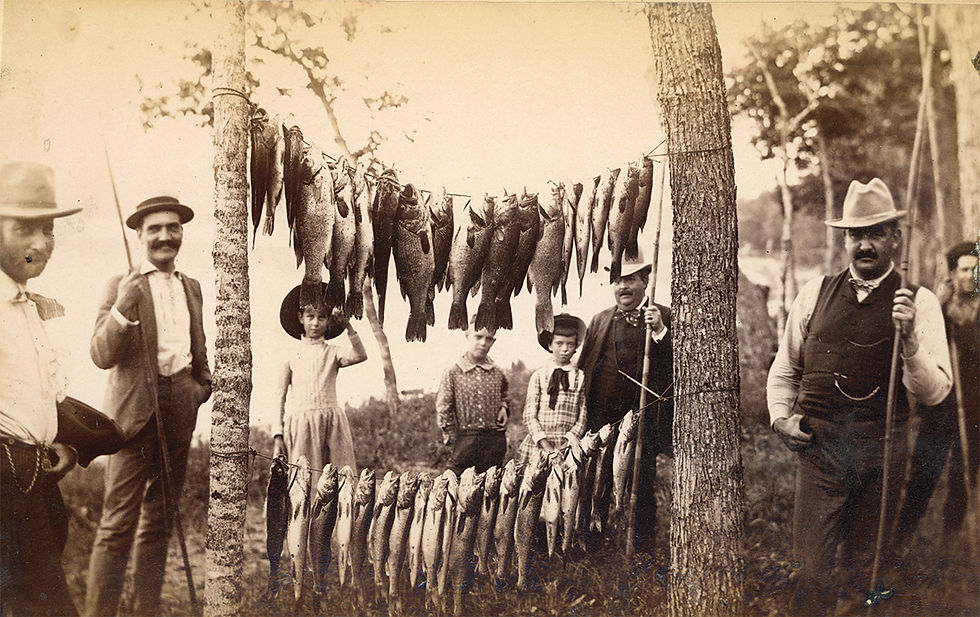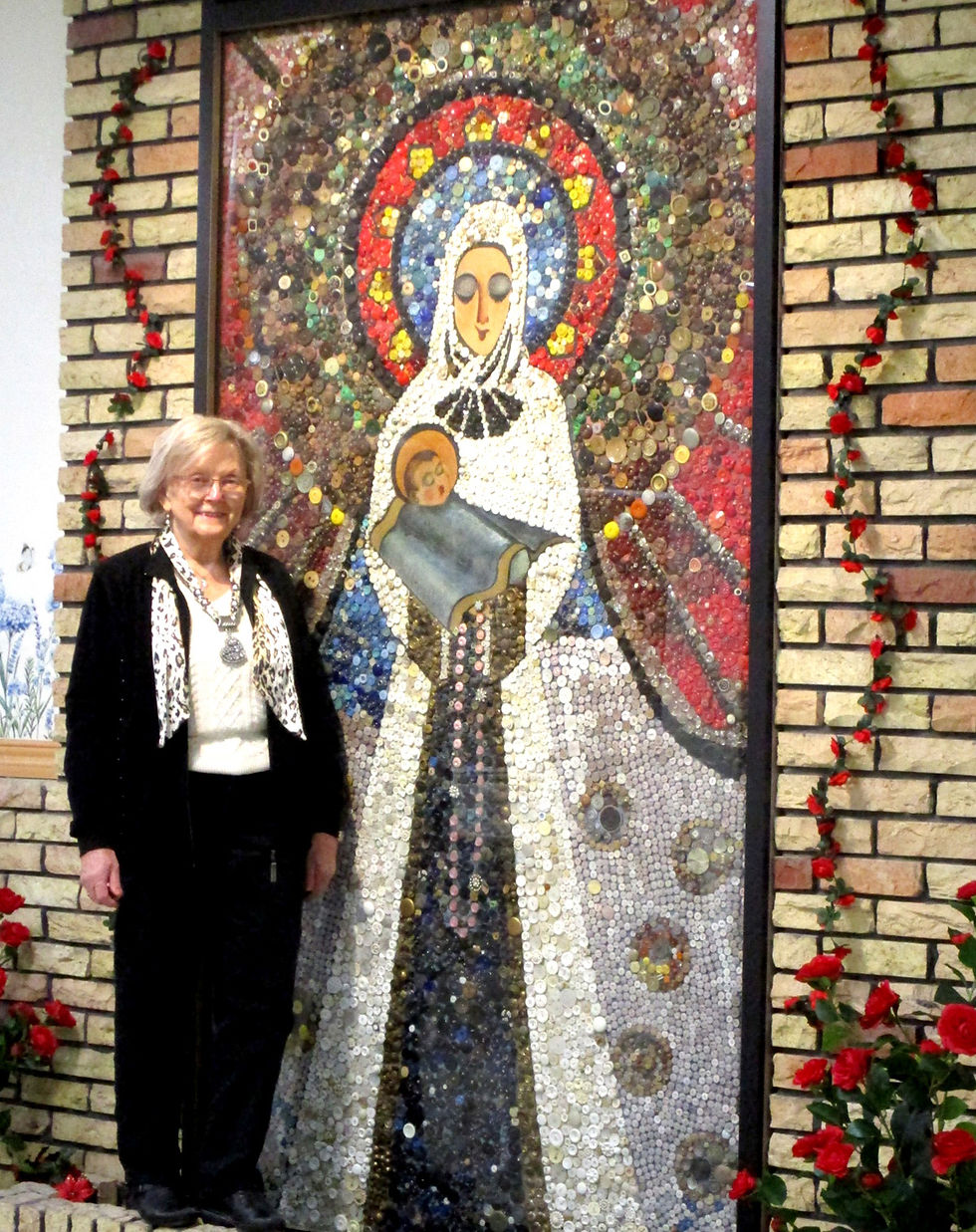Merci train was French ‘thank you’
- Sr Perspective

- Sep 29, 2023
- 6 min read
Train brought goods, goodwill to MN; now stored at museum
By Bill Vossler
Minnesota’s Merci train car was filled with 31 crates containing thousands of different items weighing five tons, all donated by private French citizens, according to Timothy J. Bill’s “The History of the Minnesota Merci Boxcar,” and Wikipedia’s “Merci Train.”

According to Bill, the items included paintings, engravings, prints, books, posters, china, glass, fine fabric, lace, dolls, toys, and lamps. Other references add statues, ornamental objects, furniture, even a Legion of Honor medal supposedly belonging to Napoleon.
According to Wikipedia, Andre Picard, a French railroad worker and World War II veteran, came up with the idea to thank the United States for everything the U.S. had done for France.
“The Merci boxcar came from France in 1949,” said Doug Thompson, Curator at the Minnesota Military and Veterans Museum in Camp Ripley, where Minnesota’s Merci boxcar resides. “Ours is one of 49 that were sent, one for each of the 48 United States, and one shared by the District of Columbia and the territory of Hawaii, which Hawaii ended up keeping. Each boxcar contained items donated by French people in different regions of France. Our boxcar, like all the others, has seals on the side of the car that indicate which regions sent items.” More than 10,000 French people donated.
“All the cars were 40 and 8’s,” Doug said, “World War I train cars that were so-named because one could hold either 40 men, or eight horses.”
All 49 train cars arrived in New York aboard the ship Magellan on Feb. 3, 1949, with over 25,000 onlookers in attendance. On the side of the gift-laden French freighter was painted, “MERCI AMERICA.” Immediately the train cars were distributed among the states, where they were opened and turned into traveling exhibits before each state committee distributed the entire contents.

“Minnesota’s Merci Boxcar (also called “Gratitude” boxcar) arrived in Minneapolis on Feb. 13, 1949. The following day at 10:30 a.m. in what could only be described as miserable conditions -- icy cold and windy -- a brief ceremony was held in the front steps of the capitol,” with speakers like Governor Luther Youngdahl and French consul generals, along with 15-year-old Gladys Peterson from Tyler, Minn. Peterson and other students were on hand “in recognition of the work the state’s school children performed when the Friendship Train came through Minnesota.”
The article added, “The boxcar was placed on display at the Minnesota State Fairgrounds, which would allow many Minnesotans to come and view it. Affixed to the side of the car was a plaque with the inscription: French Merci Boxcar. Presented by the People of France to the State of Minnesota in gratitude for the Friendship Train of 1948. Accepted in trust by the State of Minnesota on February 14th, 1949. This car is one which was used during World War One for military purposes.”
After being on display until July of 1949, gifts from inside the car were given first to schools, public libraries, church groups, and finally the public. Doug said items were distributed to local historical societies who wanted them. “There was no master list and we have nothing from the train car in our museum. And we don’t know where those items are located today. Maybe in other historical museums across the state. But we don’t know what they were or where they went.”
The Merci train was a direct result of the United States’ Friendship train, also called the “Friendship Food Train.” In 1947 well-known national journalist Drew Pearson advertised that France and Italy could be helped by sending, “Life-giving food to France and Italy, every pound from the United States.”

On his radio program and in his daily “Washington Merry-Go Round” column, where he proposed the idea, and asked people to donate food, fuel, and clothing onto the train cars as they came through their communities. He said, “As this Friendship Food train passes through states on the way to New York, food will be waiting at each stop, food for those in Europe who need it to survive the winter. This train operates on heart power, the neighborliness of Americans, and will keep a lot of hearts beating in Europe.”
On Nov. 7, 1947, a train left Los Angeles, heading through eleven northern states to New York City. Pearson’s appeal was incredibly successful. Immediately town, cities, and states formed plans to collect food and send it to the Friendship Train, such an exciting and popular idea that competition among the communities, counties, and states for having sent the largest contribution was part of the work and also part of the fun.
Newspapers, radio stations and schools explained how Americans could participate. Many communities not on the original route insisted on giving, thereby causing delays, so to get everything to New York on time for the ships to take the materials to Europe, three trains ended up hauling food, like macaroni, sugar, dried peas, beans, evaporated milk, and fuel and clothing. At the end of November 1947, much of the 700 train cars worth was loaded onto two ships, the SS American Leader and SS Exiria for France and Italy. Each ship carried eight million pounds of food. Two more ships took more food later. Everything was donated.
In both Italy and France, the 10 distribution trains were called Friendship Trains. French trains stopped in Paris, Lyon, Bordeaux, Toulouse, Brest and Lorient. Local ceremonies celebrated the train wherever it stopped.

Doug said the Merci car was France’s response to America for sending those trainloads of relief supplies, “So every region in France added gifts, all donated by common French civilians, champagne, pottery, food items from different regions that were emblematic of that region.”
Initially in 1949 the Minnesota Merci train car was displayed in St. Paul, Doug said. “Afterwards for many years it was outdoors at the Minnesota State Fairgrounds, but public interest in the car started to wane. People forgot what it was there for. Then the Minnesota State Fairgrounds were being redone, and officials were looking for a permanent place for the car where people could see it, at the same time that we were looking for a significant artifact. With the car’s ties to World War II and to France, our oldest ally, and since highway 371 is one of the busiest highways in the summertime, and drives a lot of traffic to the museum, the director of this museum at the time figured our Military Museum was just the place, so he offered to take the train car. When it came the Army engineers painted it. So for the last 27 years it’s been up here at the museum.”
He adds that a new Minnesota Military and Veterans museum will be built just off the exit on Highway 371. “When our new facility is finished we expect visitorship will increase many times over. We’re going to put the Merci car inside the museum in the education room. I think that will make it a more interesting artifact that people can come and see.”
Doug said many people see the Merci Boxcar. “Many people read about the car and come from all over the country just to see ours. Some groups go on summer trips and try to see every Merci car in the country. From them we find out that our Merci car is one of the best-kept in the country. Tour groups always want to take a picture in front of the train car, a symbol of French and American friendship.”

“The comments we get,” Doug said, “are, ‘It’s fascinating,’ or ‘We’ve never heard of it before,‘ or ‘I’m surprised that you have it here at the Military Museum.’ They want to know the background of how we got the train, and the history of the train, and we are glad to tell them what we know.”
Upkeep was fairly simple for a few years, Doug said. “Basically sweeping the thing out. But a couple of years ago members of the 40 x 8 club of the St. Cloud area repainted the whole thing for us. The pavilion over the top of it somewhat protected it from the elements. That was the first repaint in the past 20 years, so basically the metal framework was painted to make sure no rust was creeping in on it. It is in very good condition right now.”
Doug said, “We are happy to have this car here. It‘s a great looking and powerful outdoor exhibit that tells a story, not so much of war, but of one country giving another country a helping hand and cementing the bonds of friendship we have with the French people. We‘re excited to have the Merci train car inside in the education room of our new museum in 2025, where thousands will see it. We’re excited to keep story alive of the Merci train car.”
Nobody seems to know what Minnesota put in the friendship train cars, except in generic terms: food, fuel, clothing. Whatever it was, it made a huge impact in France, and in a return, so did the Merci cars in the United States.
Perhaps Drew Pearson said of it best, that “The Friendship Train was a train of common boxcars filled with hope.” The same could be said of the Merci train cars.




Comments